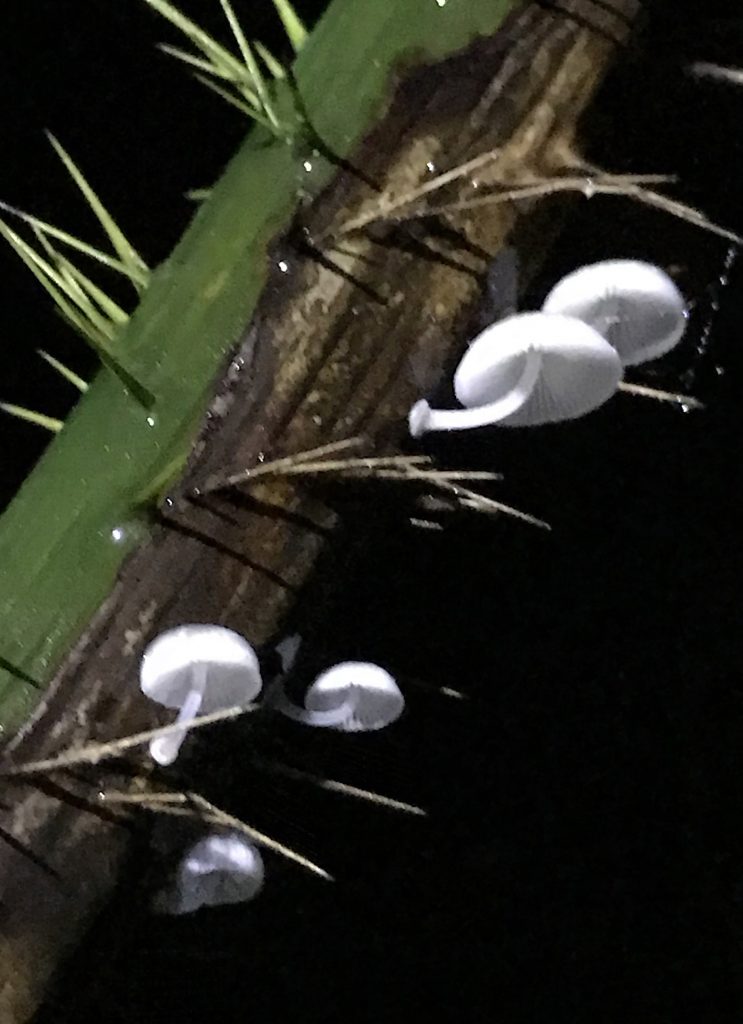Although New Year’s eve in Paluma (like many other places in Australia) lacked a fireworks light-show, there is currently an nightly light-show to be seen along the rainforest tracks thanks to the bioluminescent fungi that are currently emerging with the rains. This display may not last too long, but with the rains predicted to persist for another week at least, you stand a good chance of seeing some of these remarkable little mushrooms if you wander down the H-track or the Rainforest track after dark.
In previous years I have occasionally gone out on wet nights during the summer and, after waiting in the dark for my eyes to adjust, could see faint ghostly glows scattered along the forest floor. But when turning my torch back on there was nothing to see. Even when I located the source of the glow, it was just a wet leaf or branch. I have always assumed that this was luminous fungal mycelia (the almost invisible network of threads that represent the bulk of the organism), but until last year I had never seen any actual mushrooms glowing in the dark. I only saw a couple back then so this year the family and friends went out on two nights to see if we could see them again. On the first night we went around the H-Track and on New Year’s eve Juanita and I went down the Rainforest Track. On both occasions we saw 5-10 clumps of tiny brightly glowing mushrooms on small twigs and along dead sections of lawyer vine.

These were many times brighter than the glow from the mycelia seen on other occasions. Unfortunately I did not have by big camera with me to attempt to photograph the bioluminescence (it requires exposures of over a minute to get a good image) and we only got pictures of the mushrooms illuminated by our torches. But there are many pictures of this species on the web, such as the one below, that provide an idea of what can be seen.

While there are several species of mushroom that bioluminesce, these ones appear to be Mycena chlorophos, a widespread species found in sub-tropical Asia, Indonesia, Japan and Brazil. The caps can be much larger than the 3-8mm diameter ones seen so far in Paluma.
Reseach on a different species of bioluminescent mushroom suggest that this trait has evolved to enhance the dispersal of spores by insects attracted to the glow.
Text by Jamie Oliver, Photo by Juanita Poletto

A fascinating article. Being in the forest on a damp night is like entering another world. Thank you for sharing.
Years ago, luminescent fungi were common around the Environmental Education rainforest sensory trail.